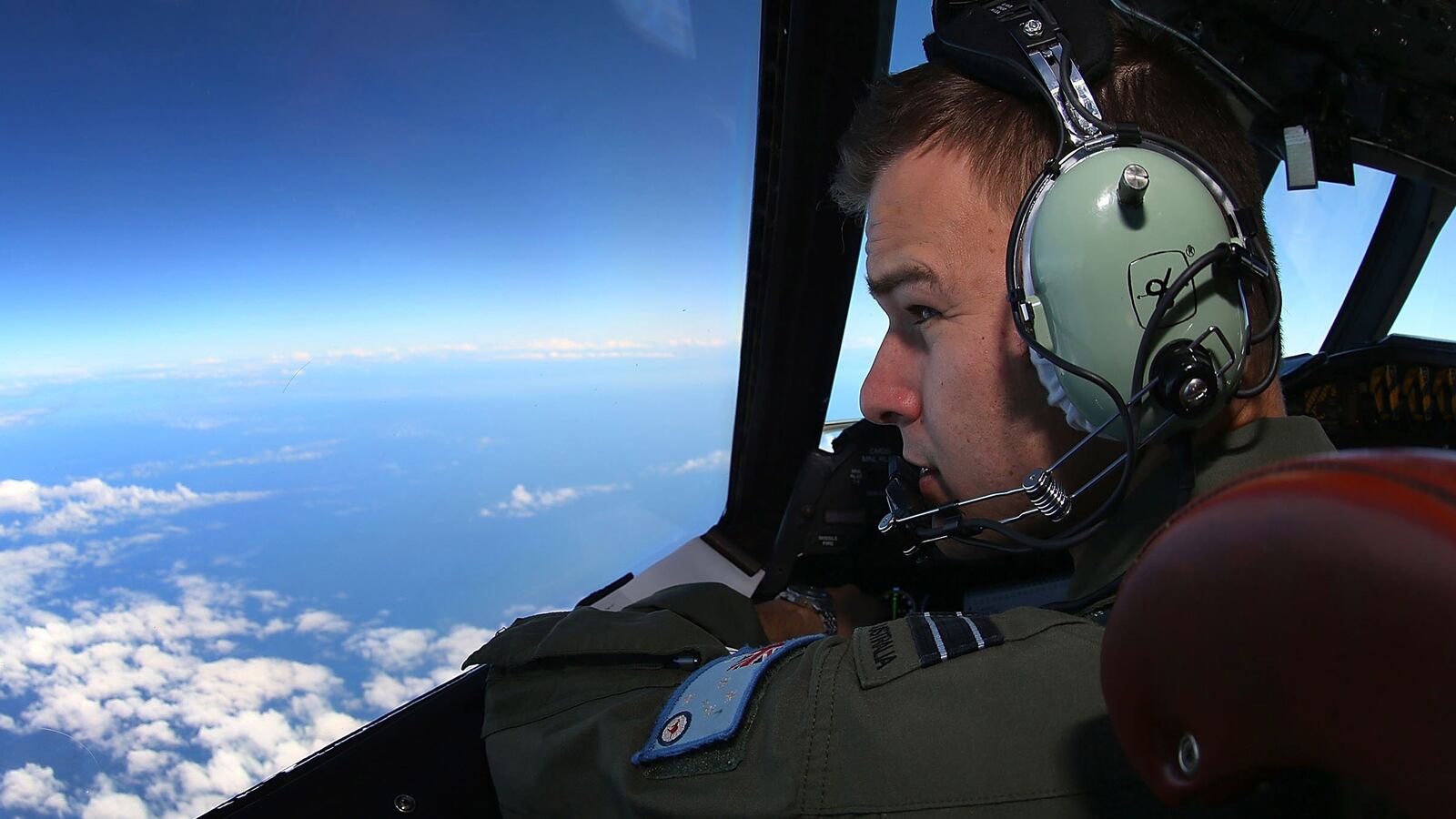The change in the search target zone for Flight MH370 seems to reveal how much can be calculated about the Boeing 777’s last hours in the air with very little information.

In order to fix the airplane’s position three things are essential: its direction, height and speed.
The first information acted upon in directing the search was the most crucial: direction. This came from pings received by the London-based Inmarsat satellite operator. It was the thinnest of clues, based on hourly signals showing that the 777 was still “alive.”
Using previously untried technology, the experts looking at the Inmarsat data were able slowly to refine the airplane’s course, beginning with a huge arc extending north of the Himalayas into Asia down to the remote southern Indian Ocean, and then settling on a smaller area, about the size of Alaska, to the southwest of Australia.
But the Inmarsat information was unable to indicate either the altitude or the speed of the airplane.
What is striking about the new calculations is that they are projecting a higher speed and, therefore, a higher consumption of fuel which, in turn, means the jet ran out of fuel sooner and did not end up in the fearsome “roaring forties” of the southern Indian Ocean.
However, this issue of speed introduces a new puzzle. Speed is governed by height—the higher the airplane flies, the thinner the air and the faster it can fly.
The top speed of a Boeing 777 is around 630mph (technically .84 mach, where mach 1 is the speed of sound). Commercial jets are “tuned” to cruise safely below the threshold of the speed of sound, where the engines operate at their highest efficiency and where the air is thin. But an airplane’s actual speed, measured as though it was at ground level, varies enormously according to high level winds – a strong tailwind, for example, can allow it to fly much faster.
This means that if, as the calculations now revealed are correct, Flight MH370 was not simply flying faster but higher. (At one point we were told, according the notoriously inconsistent reports by the Malaysians, that it soared up to 45,000 feet and dropped as low as 12,000 feet.)
If, indeed, investigators now believe it was flying significantly faster than that means that it must have been at or above its normal cruise height of 36,000 feet.
What is clear is that a remarkable forensic effort is going on, unseen, by technicians from many nations, to arrive at this picture. Where, though, is this new data coming from? Apparently some of it is based on radar returns—exactly from where and at what stage in the 777’s flight is not clear.
As I have posited in previous reports, if flight MH370 is reverse-engineered, beginning with its final plunge into the ocean, its course as traced was constant from a point somewhere close to Malaysia and Vietnam—the turning point where and when some kind of catastrophe overtook it.
It’s really not necessary to speculate what this event really was in order to know the one decisive fact: it changed course in a dramatic way, turning from the direct route to Beijing toward the Indian Ocean. That seems to have been established from tardily-reviewed radar returns. However, this leaves open the calculations of height and speed—which have suddenly become firmer.
How so?
I have been struck by one salient feature of a 777 flying, either by human hand or as a robot on autopilot, for as long as seven hours over the ocean. Its engines must have been operating perfectly.
The fuel supplying those engines is drawn from three tanks—one in the lower center fuselage, and one in each wing. To ensure the airplane’s continued stability, that fuel has to be pumped in a way that leaves the airplane in equilibrium—if, for example, the left tank empties faster than the right tank the airplane is unbalanced and would lurch off course to the right. We can assume, therefore, that the fuel flowed as it should have done, which the autopilot is capable of doing.
On the 777 the electrical power for all of its mechanical and life support systems is drawn from its two Rolls Royce engines. The in-flight performance of these engines would normally be monitored by its ACARS, Aircraft Communications Addressing and Reporting System, and in the case of the Malaysian 777 half-hourly bursts of this data would be relayed to maintenance centers on the ground.
But the ACARS on this flight stopped operating a little after its first hour of flight—whether by human intervention or because of a technical failure has to be left open.
The data on the way the Rolls Royce engines were performing would be a very accurate indication of its speed, since fuel consumption would be a guide to that, and even its height because its fuel consumption would change —the engines would suck up far more fuel at lower altitudes.
This leads me to suspect that the latest calculations of the airplane’s speed and height on its flight to oblivion are at least partly based on an extrapolation from whatever information about the engines’ performance was in its final ACARS signals.
Whether that is the case—it is conjecture—the indisputable fact that the engines kept running perfectly for many hours leads to another challenging question: How could the engines survive whatever else afflicted this airplane? Not simply survive but continue to provide power to all the systems essential to keeping the airplane in the air?
And when it comes to liability litigation, as inevitably it will, Rolls Royce would seem to be off the hook.






